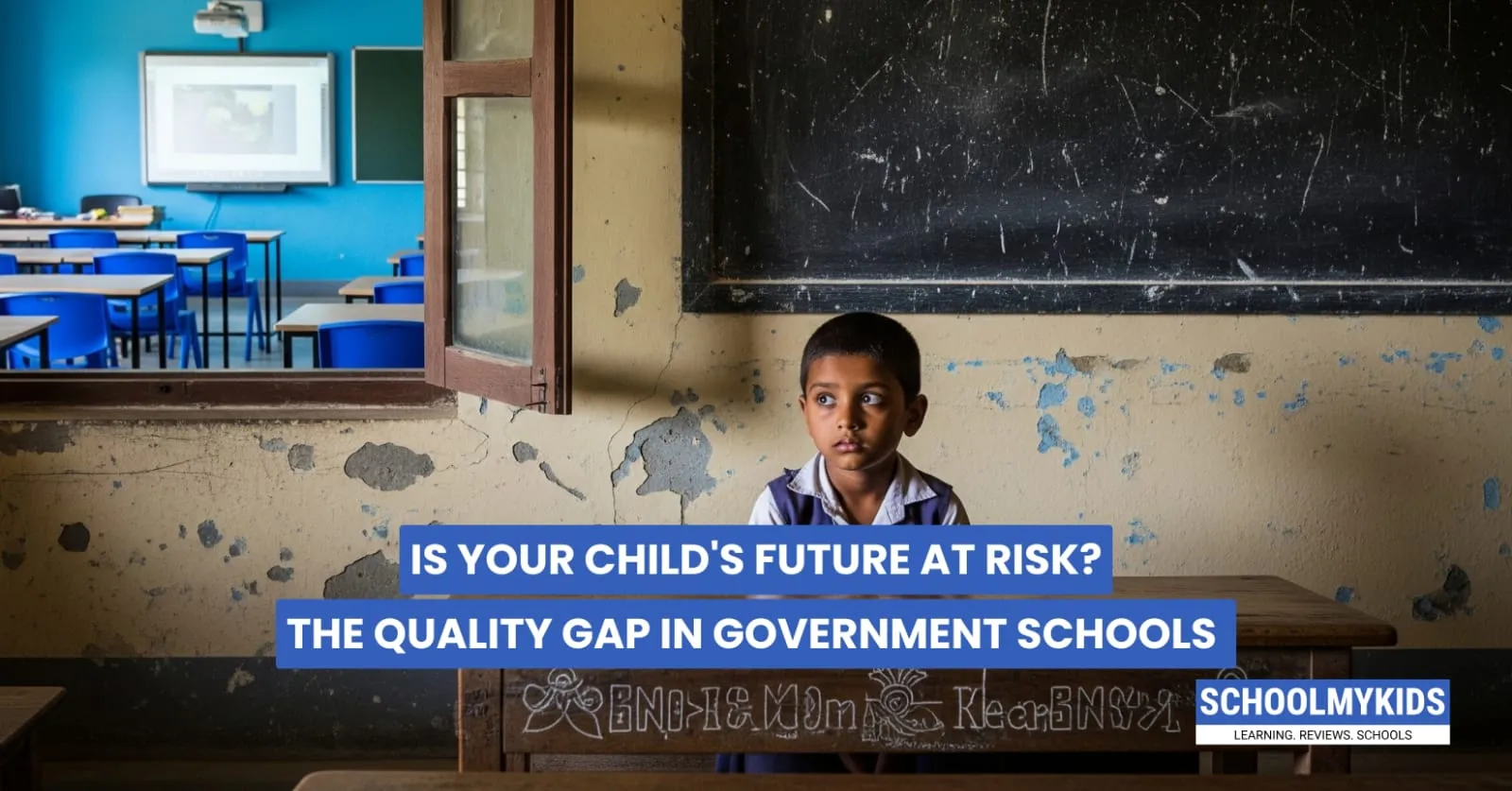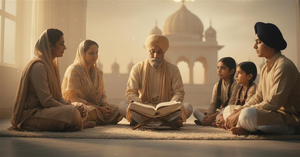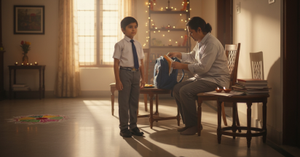Picture this: It's admission season, and you're standing outside two schools with your child. One has a fancy gate, uniformed guards, and fees that make your wallet weep. The other looks simple, maybe a bit worn, but costs almost nothing. Which door do you walk through?
If you're like most Indian parents, this scene probably gives you sleepless nights. Every parent has been there, and millions of families across our country face this exact dilemma.
The Mental Block We All Have
Somewhere deep down, most of us believe private schools are better. It's almost like it's written in our DNA.
And you know what? There's some truth to this thinking. Walk into any private school, and you'll hear teachers chatting with kids in English. The children respond confidently, their pronunciation crisp and clear. Compare that to many government schools where Hindi or regional languages dominate, and English feels like a foreign subject rather than a communication tool.
But here's where it gets complicated.
The Price We Pay (Literally)
Private school fees are like quicksand. The more you try to keep up, the deeper you sink.
Think about it. First, there's the admission fee. Then the monthly fees. Then suddenly it's time for new books (why do they change them every year?). Activity fees, sports fees, annual day costume fees, trip fees, and the list never ends. Before you know it, you are working extra hours just to pay for school expenses, missing your child's bedtime stories because you're busy earning money for their "better future."
Priya, a working mother, shared something. She said, "I wanted to give my daughter the best education, so I enrolled her in an expensive private school. But now I'm so stressed about paying fees that I snap at her when she asks for help with homework. What kind of 'better future' am I creating?"
The Quality Gap: What's Really Happening?
Let's talk about the elephant in the room: the actual quality difference.
Where Private Schools Actually Lead
- Infrastructure and Facilities: Walk into most private schools and you'll see well-maintained buildings, clean toilets, computer labs with working systems, and playgrounds with proper equipment. Many government schools are still catching up on these basics.
- Class Sizes and Individual Attention: Private schools typically maintain smaller class sizes. While a government school might have 50-60 students crammed into one classroom, private schools often keep it to 25-30 students per teacher. This means more one-on-one interaction, teachers remembering each child's name, and personalized feedback on assignments.
- English Communication: This is where the gap feels most obvious to parents. Private school teachers often conduct entire classes in English, encouraging students to think and respond in the language. Children naturally become more confident speakers. In many government schools, English is still taught as a subject rather than used as a medium of instruction.
- Extra-curricular Activities: Dance classes, music lessons, sports tournaments, and science exhibitions. Private schools often have dedicated time and resources for these activities. They understand that education goes beyond textbooks. Government schools, stretched thin with basic requirements, sometimes struggle to offer these enrichment programs.
- Study Materials and Technology: Private schools often have updated textbooks, digital learning tools, smart boards, and educational apps. Government schools are improving, but many still rely on older teaching methods and materials.
But Here's What the Numbers Don't Show
- Pressure vs. Learning: Many private schools focus heavily on grades and competition. Children as young as 6-7 years are ranked, compared, and pushed to excel in tests. Government schools, with less commercial pressure, sometimes allow children to learn at their own pace and discover their natural interests.
- Teacher Dedication: While private school teachers might have better qualifications on paper, many government school teachers have chosen teaching as a calling, not just a job. They often stay in the same community for years, understanding local challenges and building genuine relationships with families.
- Real-World Exposure: Government schools have children from diverse economic backgrounds. This exposure to different realities can build empathy, social skills, and resilience that money can't buy. Private schools, especially expensive ones, can sometimes create bubbles that don't prepare children for the real world.
- Financial Stress Impact: Here's something most people don't consider: when families stretch their budgets for private school fees, the stress affects the entire household. Children sense this tension. They worry about money, feel guilty about expenses, and sometimes lose the carefree nature essential for healthy development.
But before you panic and rush to the nearest private school, let us explore what these numbers don't tell you.
The Stories Numbers Don't Capture
Take Karan, for instance. His parents enrolled him in the most expensive school in town. Three years and lakhs of rupees later, he was struggling with basic math. Meanwhile, Anita's daughter Meera, who studies in the local government school, topped her district in the science Olympiad.
What made the difference? Not the school building or the fees.
It was Anita. She spent evenings helping Meera with homework, reading stories together, and asking about her day. She couldn't afford expensive tuition, so she became Meera's first teacher at home.
On the other hand, Karan's parents were so busy working extra shifts to pay school fees that they barely had time to ask about his studies.
The Real Talk About Government Schools
We will not sugarcoat it. Many government schools face challenges. Overcrowded classrooms, limited resources, and teachers juggling multiple responsibilities. Sometimes there are 50-60 kids in one class. Sometimes the English teacher isn't completely comfortable with the language themselves.
But here's what's changing: Many government schools today have digital classrooms, mid-day meals that ensure your child isn't studying on an empty stomach, and teachers who genuinely care about every student's progress. The Right to Education Act has brought significant improvements in infrastructure and teaching standards.
What Really Determines Success?
After observing dozens of families and talking to teachers, one thing becomes clear. The quality gap isn't just about schools; it's about the entire ecosystem around your child.
A child who gets encouragement at home, has someone to guide their studies, and feels emotionally supported will thrive anywhere. Private school or government school, expensive or free, none of that matters if the foundation at home is strong.
Making the Right Choice for Your Family
So how do you decide? Here are some real questions to ask yourself:
Can you afford private school fees without sacrificing family time and peace? If paying fees means you're constantly stressed, working late, or fighting about money, maybe it's not worth it.
Are you ready to be actively involved in your child's education regardless of which school they attend? Because this involvement matters more than the school's name board.
Have you actually visited both options? Sometimes, government schools in your area might surprise you with their facilities and dedicated teachers.
Conclusion
Your child's future isn't at risk because of which school you choose. It's at risk if they don't have a supportive environment to grow, learn, and dream.
The quality gap between schools is real, but the love gap at home is more dangerous. A government school with involved parents often produces better results than an expensive private school with absent parents.
Before you lose sleep over admission forms and fee structures, ask yourself: What can I do today to support my child's learning, regardless of where they study?
Remember, education happens everywhere, at the dinner table when you discuss their day, during weekend trips when you explore new places together, and in those quiet moments when you read together before bed.
The school is just one piece of the puzzle. You, as a parent, are the most important piece.









Be the first one to comment on this story.